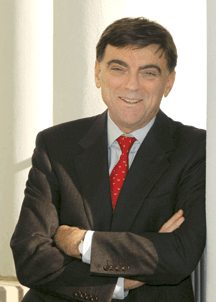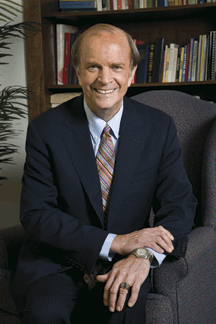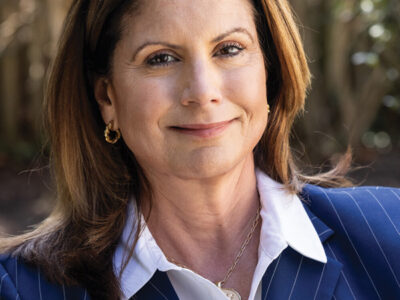
Concluding a worldwide search that encompassed 143 candidates, the Wharton School named a new dean in June. It’s something of a homecoming for Dr. Thomas S. Robertson, who was a faculty member from 1971 to 1994. After holding the Pomerantz Professorship from 1987 to 1994 and completing his second six-year stint as chair of the marketing department in 1994, Robertson left Wharton for the London Business School, where he also chaired the marketing department and later served as deputy dean. Between 1998 and 2004, he was dean of Emory University’s Goizueta Business School in Atlanta. Most recently he was executive faculty director of Emory’s Institute for Developing Nations.
Robertson replaces Patrick Harker CE’81 GCE’81 G’83 Gr’83, who left to become president of the University of Delaware earlier this year [“Gazetteer,” Jan/Feb 2007].
Penn President Amy Gutmann called Robertson “an accomplished academic leader, a seasoned administrator, and a highly successful fundraiser who brings a timely vision of international business education and an enthusiastic commitment to academic excellence and diversity.”
At Goizueta, Robertson doubled revenues, almost doubled the school’s endowment, and increased the size of the faculty by 73 percent. He doesn’t anticipate growing Wharton’s faculty or student body in the foreseeable future, but does see a need for raising new funds. “Those funds go to faculty research, they go for student scholarships, and potentially they go to bringing in students who haven’t been at Wharton before, kids from other parts of the world,”
he said.
At Emory, Robertson was instrumental in implementing a university-wide strategy for internationalization. That experience, along with his recent focus on the developing world, he said, will inform his leadership at Wharton—amplifying the school’s potential to be a “force for good” in the world.
“We live in a very privileged society, and our students are privileged,” Robertson said. “A good number are interested in contributing to the world, and interested in opportunities for student exchange in other countries or projects with other countries. I think there are opportunities for Penn to help change our students a little bit, to open them up a little bit and make them a little less comfortable in their environment.
“One of the challenges of education,” he added, “is just to make people a little uncomfortable.”
—T.P.
Alumni Relations Head Announced
Just as the Gazette was going to press we learned that Fredrick Hoopes Wampler had been hired as Penn’s new assistant vice president for alumni relations, succeeding Bob Alig C’84 WG’87, who resigned from the position last spring after a six-year tenure [“Gazetteer,” Mar|Apr]. Wampler previously worked for the Harvard Alumni Association, where he had been director of College Alumni Programs since 2001 and served as assistant director and special programs coordinator for two years before that. Earlier in his career, he worked in marketing and advertising. He has a master’s degree in education from Harvard, received in 1999, and did his undergraduate work at the University of Richmond’s E. Claiborne Robins School of Business, graduating in 1991 with a major in marketing.As AVP for alumni relations, Wampler—he goes by Hoopes—will coordinate alumni programs across Penn’s 12 schools and direct University-wide alumni efforts on campus and around the globe (not to mention serve as publisher of the Gazette). A fuller article introducing him to alumni will appear in our next issue.
—J.P.
Stetson To Retire as Admissions Dean
EDITOR’S NOTE:
Shortly after the Gazette’s Sept|Oct issue went to press, Lee Stetson announced his immediate resignation as the University’s dean of admissions. In a written statement, he gave no indication of the reasons for his abrupt departure. “I now recognize that it is in the University’s, and my own best interest, to step down immediately, before the commencement of the fall semester,” he said. “I am grateful for the opportunity I have had to serve this wonderful University for the past three decades.”President Amy Gutmann and Provost Ron Daniels issued a separate statement naming Eric Kaplan as interim dean of admissions until a national search yields a permanent replacement. Kaplan is currently associate secretary in the Secretary’s Office, and had previously been dean of admissions and financial aid at Lehigh University.

“There comes a time when after 30 years you probably need to do something different, but also finish hopefully on a high note for Penn,” Willis J. “Lee” Stetson Jr. GEd’71 was saying a few weeks after it was announced that he would be retiring as of June 30, 2008 from his position as the University’s dean of admissions.
Jimmy Carter was in the White House and the late Martin Meyerson Hon’70 was in College Hall when Stetson arrived on campus from the University of Delaware in July 1978, but he has brought a lot more than stability to the admissions deanship. In a statement, Penn President Amy Gutmann and Provost Ron Daniels called Stetson “one of the country’s leading deans of admissions, with a keen awareness of the challenges involved in selective admissions,” who has been “tireless in his commitment to sustain and enhance Penn’s reputation for excellence.” They also credited his leadership in the University’s quest for greater diversity in admissions, which they said “has enabled us to reach out broadly to exceptional students from a wide range of backgrounds and interests.”
During Stetson’s tenure applications to the University have increased from about 7,000 annually when he started to nearly 23,000 today. Over that period (as many an alumni parent knows), Penn has also become steadily more selective, with only 16.1 percent of applicants accepted this past year (the lowest acceptance rate in Penn’s history). Average SAT scores have gone from 1261 for the Class of 1983 (Stetson’s first full admitted class) to 1419 for the incoming class. In terms of diversity, that first class “had 267 students of color and 29 international students,” while the freshmen arriving this September include 898 students of color (37.2 percent of the class) and 318 international students (13 percent).
Stetson allows that Penn has probably seen the most progress among Ivy League and similar schools in terms of increasing its appeal to the best students, for which he is quick to credit “a wonderful staff both now and over the years” and the strong support of the five Penn presidents he has served under.
When he leaves office next summer, Stetson looks forward to doing some higher education consulting nationally and internationally—he’s had offers before, he says, “but I didn’t want to divert from the job at hand”—as well as traveling and spending more time with his wife. They’ll also take the opportunity to “just move at a little different rate,” he adds. “We’ve been working at 150 percent; maybe we’ll work at 100 percent now.”
—J.P.




